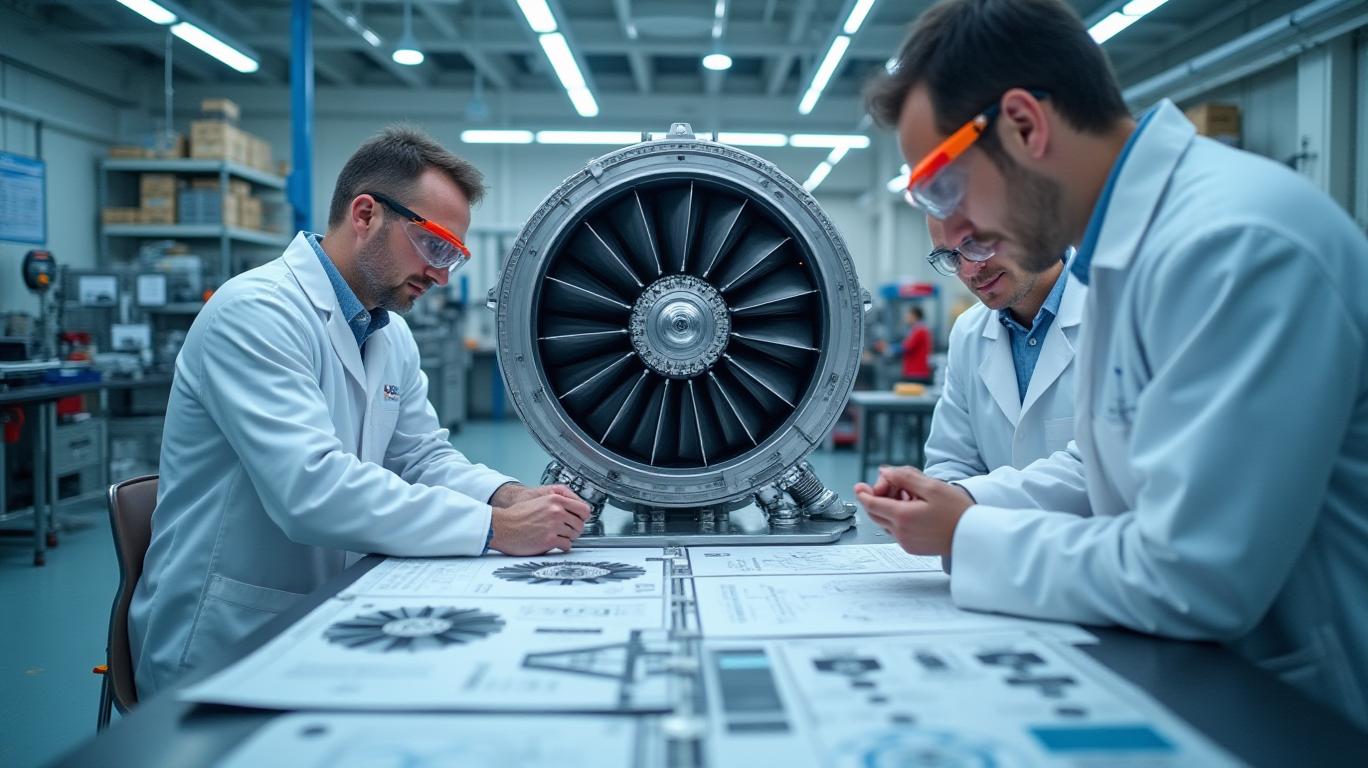MTU Aero Engines: Bridging the Gap Between Earnings Growth and Shareholder Expectations
Monday, Feb 24, 2025 5:15 am ET
As investors, we often look for companies that align with our investment goals and expectations. One such company is MTU Aero Engines (ETR:MTX), a leading provider of aircraft engines and maintenance services. However, a recent analysis has shown that MTU's earnings growth rate has lagged behind the 8.7% CAGR delivered to shareholders. Let's dive into the reasons behind this discrepancy and explore how MTU can bridge this gap.

Understanding the Discrepancy
MTU's earnings growth rate in 2024 was 29%, which is impressive on its own. However, this growth rate falls short of the 8.7% CAGR delivered to shareholders. To understand this discrepancy, we need to consider the factors contributing to both MTU's earnings growth and the CAGR delivered to shareholders.
MTU's earnings growth in 2024 was driven by several factors, including:
* Strong demand for MRO services across all platforms
* Robust earnings growth across all business areas
* The company's focus on innovation and investment in research and development
* Effective liquidity management
On the other hand, the 8.7% CAGR delivered to shareholders is a reflection of the company's long-term performance and growth potential. This CAGR is influenced by various factors, such as:
* The company's market position and competitive advantages
* The overall economic conditions and industry trends
* The expectations and demands of shareholders
Bridging the Gap: Strategic Initiatives and Investments
To bridge the gap between MTU's earnings growth rate and the CAGR delivered to shareholders, the company can consider the following strategic initiatives and investments:
1. Investment in Research and Development (R&D): MTU has consistently invested in R&D to develop and realize innovative propulsion technologies. In 2024, R&D expenses amounted to €342 million, up 14% from the previous year. This investment focuses on raising the efficiency of the Geared Turbofan programs, technology studies for future evolutionary and revolutionary engine generations, and expanding its virtual engine capabilities. By continuing to invest in R&D, MTU can maintain its competitive edge and drive long-term growth.
2. Expansion of Maintenance, Repair, and Overhaul (MRO) capabilities: MTU has expanded its MRO capabilities to meet the growing demand for maintenance services. In 2024, the company's commercial maintenance business saw the highest revenue growth, with adjusted revenue up 20% to €5.1 billion. This expansion is driven by the good mix in independent maintenance and the fact that the share and material intensity of Geared Turbofan maintenance were lower than planned in the first nine months of the year. By further expanding its MRO capabilities, MTU can tap into new revenue streams and strengthen its market position.
3. Growth in the OEM business: MTU has also focused on growing its original equipment manufacturing (OEM) business. In 2024, adjusted revenue in the OEM business increased by 14% to €2.5 billion. The company has achieved this growth by leveraging its profitable revenue mix, high demand for spare parts, and increased military business. By continuing to invest in the OEM business, MTU can further diversify its revenue streams and reduce its dependence on a single business segment.
4. Investment in the military business: MTU has made significant investments in its military business, which contributed to a 14% increase in adjusted revenue in 2024. The company has focused on technological advances for the New Generation Fighter Engine for the next-generation European fighter aircraft, the TP400-D6 for the A400M, and the EJ200 for the Eurofighter Typhoon. By continuing to invest in the military business, MTU can capitalize on the growing demand for military aircraft and maintain its market leadership.
5. Expansion of the spare parts business: MTU has expanded its spare parts business, which has seen organic revenue growth in the low-teens percentage range. The company has focused on driving sales in the series business through spare and leasing engines, as well as in the spare parts business through mature widebody and narrowbody engines. By further expanding its spare parts business, MTU can create new revenue streams and enhance its customer relationships.
Conclusion
MTU Aero Engines has made significant strides in growing its earnings and expanding its market position. However, the discrepancy between its earnings growth rate and the CAGR delivered to shareholders highlights the need for the company to explore strategic initiatives and investments to bridge this gap. By focusing on R&D, expanding MRO capabilities, growing the OEM business, investing in the military business, and expanding the spare parts business, MTU can drive long-term growth and better align its earnings growth rate with the expectations of shareholders. As investors, we should continue to monitor MTU's progress and consider these strategic initiatives as potential opportunities for growth and value creation.










